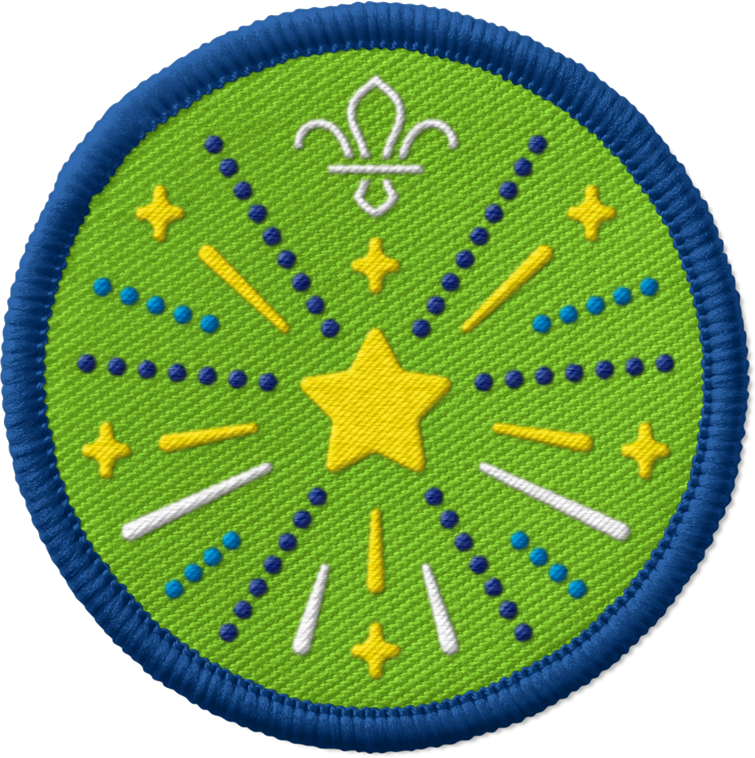
Make your own graggers
You’ll need
- A selection of materials to fill your graggers, such as beads, paper clips, small pebbles, popcorn kernels, dried beans, uncooked pasta, rice, lentils
- Paper plates, plastic bottles with lids, paper cups, or kitchen towel tubes
- Spoons, cups, funnels or jugs to help fill your graggers (optional)
- Strong sticky tape
- Scissors
- Stapler and staples (if using paper plates)
- Colourful wrapping paper and glue sticks (if using tubes or bottles)
- Other craft materials to decorate, such as coloured pens, paper, stickers, washi tape, coloured sticky tape, and ribbons (optional)
Before you begin
- Use the safety checklist to help you plan and risk assess your activity. Take a look at our guidance to help you carry out your risk assessment, including examples.
- Make sure all young people and adults involved in the activity know how to take part safely.
- Make sure you’ll have enough adult helpers. You may need some parents and carers to help if you’re short on helpers.
Scouts is open to everyone. We don’t identify exclusively with one faith, and we welcome people of all faiths and of none.
We know it’s important for people to learn about each other, including understanding different faiths and beliefs. Scouts always respects people’s beliefs, faiths and cultures, and everyone should be open to learn.
As an inclusive and values based movement, we support our members to engage and learn about different faiths and beliefs in an exciting and meaningful way, even if they don’t have a faith themselves.
Celebrating and understanding differences, including differences in faiths and beliefs, is an important part of our Scout values, which are:
- Integrity: We act with integrity; we are honest, trustworthy and loyal.
- Respect: We have self-respect and respect for others.
- Care: We support others and take care of the world in which we live.
- Belief: We explore our faiths, beliefs and attitudes.
- Co-operation: We make a positive difference; we co-operate with others and make friends.
Our value of Belief and its exploration helps Scouts to learn from other faiths and beliefs. This encourages them to develop or build their personal beliefs and understand their shared values, whether faith-based on not.
We know that learning about faiths, beliefs and different attitudes can help to break down barriers, helps us all to recognise what we have in common, and teaches us to value and respect other people. It also helps us to build up respect, acceptance and knowledge for each other, leading to a more co-operative and inclusive society.
In our diverse society, people can sometimes feel cautious talking about this sensitive subject. However, it's important that Scouts offers young people safe, exciting and open spaces to explore faiths and beliefs. They should be able to engage in personal reflection, as they question and develop their opinions and understanding of the world around them.
Making time for personal reflection and developing our beliefs means exploring the places, people, communities, celebrations or stories which hold meaning for us, and it may not necessarily mean exploring a faith.
For example, someone’s shared values may be their Scout Values and that person may choose to reflect on them at important times, such as when they make their Promise. Others may choose to reflect at certain times of the year, such as a faith-based festival, birthdays, meaningful events or at New Year. Some people may still celebrate events, such as Christmas, but use it as a time to celebrate family, friends and loved ones, as well as for charity and giving.
Discover more about Faiths and Beliefs in Scouts.
Purim is a Jewish festival that usually falls in February or March each year. It starts at sunset on the first day and then finishes at nightfall the next. It’s usually pronounced PUH-rim or pooh-REEM.
Purim a time for celebration and is a lively and fun festival. People dress up in costumes, share food and drink including triangular biscuits called hamantaschen, and enjoy spending time with family and friends. People also give gifts to their friends and to people in need.
Purim comes from the biblical Book of Esther. Jews remember Esther, who was the Queen of Persia more than 2,000 years ago. Esther was married to the King, who had an advisor called Haman.
Haman made plans to kill all the Jews on a certain date. He drew lots to choose the date. The name of the festival, Purim, means ‘lots’ in Ancient Persian, because Haman drew lots.
Queen Esther found out about the plans and, although nervous, summoned the courage to tell the King about Haman's evil plan. She explained that this was because Haman was going to kill all the Jewish people and that she was Jewish. The King was furious and stopped Haman’s plan.
The Book of Esther is read aloud at the place of worship for Jewish people, called a synagogue.
During the story, every time Haman's name is mentioned the young people stamp their feet, boo, hiss and shake rattles to drown out the sound of his name. After the service, some dress up and act out the story.
On the day before Purim, Jews might fast to commemorate how the Jewish people fasted and prayed to God for the Jewish people to be saved. Queen Esther only agreed to tell the King about Haman’s plans if Jewish people fasted and prayed first.
The story of Esther happened more than 2000 years ago in Ancient Persia. There lived a woman called Esther. Esther’s uncle was called Mordecai and he was the leader of the Jews.
The King at the time, King Ahasuerus, asked Esther to marry him and become his new Queen. Her uncle, Mordecai, told Esther not to tell the King she was Jewish, so she didn’t.
King Ahasuerus had a minister called Haman, who hated the Jews. Haman wanted everyone to bow down to him. Mordecai refused to bow down to Haman, as he believed this was against his Jewish beliefs.
This made Haman very angry. He decided to take revenge on all the Jews. He told the King that Jews were a threat and action needed to be taken. The King told Haman he could do what he wanted, so Haman made plans to kill all the Jews on a certain date. He drew lots to choose the date.
Mordecai found out about Haman’s plan and asked Esther for help. He wanted her to talk to the King to ask him to save the Jewish people. However, no one was allowed to approach the King without permission, not even Esther. Anyone who did was likely to be killed.
Esther knew she would be risking her life, but she agreed to tell the King. She said she’d tell him only if all the Jewish people spent time fasting and praying first.
Esther summoned the courage to tell the king about Haman's evil plan. She explained that this was because Haman was going to kill all the Jewish people and that she was Jewish.
The King was furious and stopped Haman’s plan. The King sent Haman away forever. Esther’s bravery and standing up for her people helped save all the Jews.
Planning and setting up this activity
- This is a great activity to plan around Purim, a Jewish festival that usually falls in February or March each year.
- You could invite someone who celebrates Purim to your session and invite them to share their experiences. You could also connect with a predominantly Jewish Scout Group and find out how they’re celebrating Purim.
Running the activity
- Tell everyone that you’ll be doing an activity that links to the Jewish festival of Purim. It’s usually pronounced PUH-rim or pooh-REEM.
- Ask if anyone knows anything about Purim.
- Explain that Purim is important to Jews as they are remembering God's power to save them and that good overcomes evil. It's a time for celebration and is a lively and fun festival.
- Tell everyone you’re going to make graggers. They’re sometimes also called groggers.
- Ask if anyone knows what graggers are or what they’re used for. Explain that they're noisemakers used during Purim. During Purim, the biblical Book of Esther is read aloud at the place of worship for Jewish people, called a synagogue. In the story of Esther, Queen Esther helped save the Jewish people from an evil man called Haman, who was plotting to kill them all. When the story is read out in the synagogue, every time Haman’s name is mentioned young people stamp their feet, boo, hiss and shake graggers to drown out the sound of his name.
- To make your noisemakers, decide what you’ll use to make your gragger and what materials you’ll fill it with, depending on what you’ve got available.
- Remember, you’ll want to leave space inside your gragger, so that the materials to move around inside and make a great noise.
- Take a plastic bottle. Make sure your plastic bottle is empty, clean and dry. You’ll need the lid too.
- Partially fill the bottle with your chosen materials, such as dried beans, rice, lentils or small pebbles.
- Screw the lid on tightly. You may want to use tape to secure it.
- Decorate your gragger if you’d like to. You could use decorative or coloured tape (such as washi tape), stickers or self-adhesive decorations.
- You could also use glue to stick on some coloured paper or other craft materials. Remember you’ll need time for them to dry if you use glue.
- Take a paper plate. If you want to decorate your gragger, you could do this first. You could also decorate it after you’ve put it together.
- Turn your paper plate upside down, so the bottom of it is facing up, and decorate that side. You could use colouring pens or pencils, craft materials, coloured card or stickers. Remind everyone that the plate will get folded in half, so they may want to consider their design around this.
- When you’re ready, fold your paper plate in half. Press down to crease it firmly.
- With adult supervision and being careful of your finders, carefully staple halfway along the curved edges of the plate. This should attach the two edges together, while leaving a gap to fill the plate.
- Fill the plate with your chosen materials, until it’s a quarter or third full. You need to leave space for the items to move around and rattle.
- Finish stapling the curved edges together.
- Use sticky tape to fully seal the edges. This makes sure nothing will fall out when you shake the cups.
- Take two paper cups that are same size as each other.
- You could use colouring pens or pencils, craft materials, ribbons, coloured card or stickers to decorate these first.
- Put your chosen materials, such as dried beans, lentils or rice, into one of the cups. Fill it until it’s about a third full.
- Place one cup to the other cup, with the cup rims together.
- Use sticky tape to stick the cups together. Wrap the tape around the cup rims a few times to secure it. This makes sure nothing will fall out when you shake the cups.
- Grab a used kitchen towel tube.
- Carefully cut enough wrapping paper to cover your tube, including the two ends.
- Use glue sticks to cover the underside of the wrapping paper in glue, and stick over your tube, including one of the ends. Leave enough spare to cover the other end later.
- Use sticky tape to make sure one end is secure.
- Partially fill with your chosen materials.
- Then cover and secure the other end of the tube, using sticky tape.
Make some noise
- Gather everyone back together, with their finished graggers.
- You could read the story of Esther and whenever Haman’s name is spoken, shake your graggers to drown out the sound.
- When you’re finished with your graggers, try to recycle as much as possible, by separating and cleaning any recyclable materials.
Reflection
This activity gave everyone the chance to explore faith and beliefs. It was an opportunity for everyone to learn a bit about an important occasion in the Jewish calendar, and for Jewish members, to reflect on the meaning behind a festival they celebrate.
Was there anything that surprised you? Is there anything you’d like to learn more about?
One of the Scouts values is belief. Scouts always respect people’s beliefs, faiths and cultures, and everyone should be open to learn. Ask everyone why it’s important for people to learn about each other's faiths and beliefs, even if we don’t have a faith ourselves. Tell everyone that part of being a global citizen, as well as being a Scout, is learning about different faiths, cultures and beliefs and identifying the things people have in common.
Can you think of any stories from other faiths and beliefs which have a similar meaning? Can you think of any similarities between Purim and occasions celebrated in other faiths or cultures?
Safety
All activities must be safely managed. You must complete a thorough risk assessment and take appropriate steps to reduce risk. Use the safety checklist to help you plan and risk assess your activity. Always get approval for the activity, and have suitable supervision and an InTouch process.
- Scissors
Supervise young people appropriately when they’re using scissors. Store all sharp objects securely, out of the reach of young people.
- Sharp objects
Teach young people how to use sharp objects safely. Supervise them appropriately throughout. Store all sharp objects securely, out of the reach of young people.
- Glue and solvents
Always supervise young people appropriately when they’re using glue and solvent products. Make sure there’s plenty of ventilation. Be aware of any medical conditions that could be affected by glue or solvent use and make adjustments as needed.
- Rubbish and recycling
All items should be clean and suitable for this activity.
- To make this activity easier, some materials could be pre-cut or pre-made for people to use in this activity.
- If anyone struggles with fine motor skills, they could use larger materials. You could swap out the items for something easier to handle or use a funnel to help people pour the materials into the gragger.
- Some people don’t like or struggle with loud noises, such as the shaking of the graggers. You could try a mimed or quiet version or come up with other alternative. You may want to have a space for people to take a break if they’re overwhelmed by the noise.
All Scout activities should be inclusive and accessible.
If you enjoyed this activity, you could try our other activities linked to Purim, such as making Purim biscuits. You could also learn about another Jewish festival, such as Hanukkah, or you may want to look at our badges to do with World Faiths.


